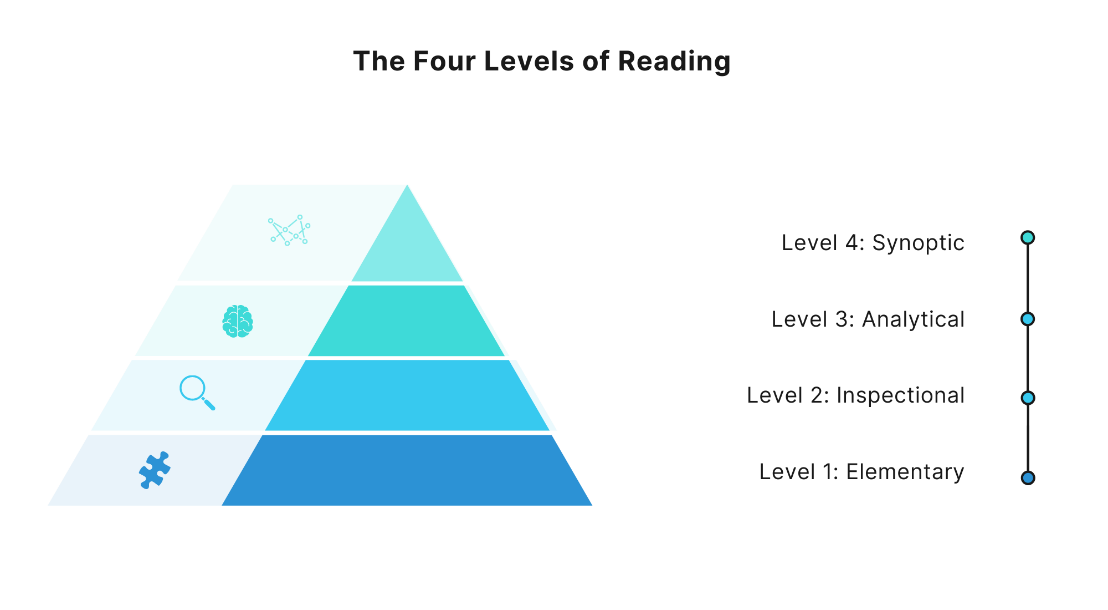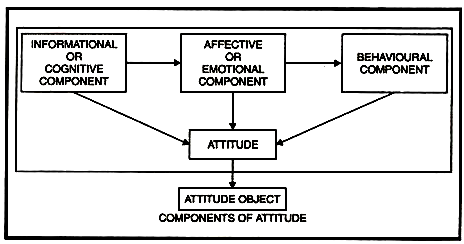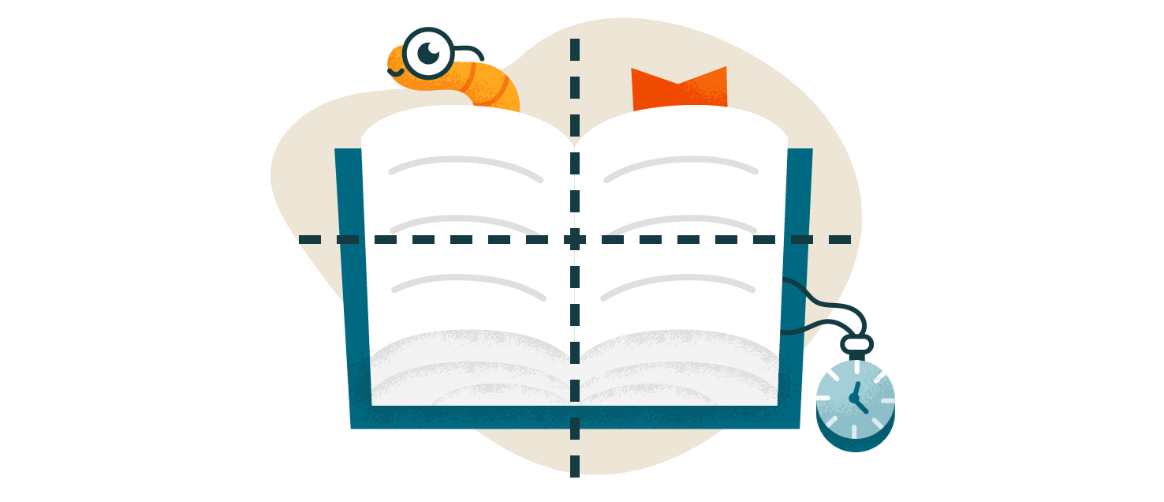Apprendre des leçons de vie : 2e partie
Bulletin de pratique en matière de WHEC et directives cliniques de gestion pour les fournisseurs de soins de santé. Subvention à l'éducation fournie par la santé des femmes et de l'éducation Center (WHEC).
A Resource and Practical Guide for Teachers, Students and Administrators (Schools and Universities) for Planning Programs for Youth Development
The Women’s Health and Education Center (WHEC) - A Community-based Advocacy Charity for people worldwide, and a United Nations ECOSOC-accredited non-governmental organization (NGO in Special Consultative Status, since 2008), highlights the importance of advocacy projects / programs, and importance of partnership. Mental health governs so much of our lives, and we must give it the attention and care that it requires in order to improve quality of life and social-emotional wellbeing. Each new-generation of children faces challenges, but those being delt with by today's youth seem particularly daunting. Children at an early age are confronted by situations that require decision-making skills for preventive actions. Mental health programs in school and universities are essential.
The purpose of this document is to teach these skills launched for Sustainable Development Goals (SDGs) 3, 4, 5: Learning Life Lessons Series. These so-called Life-Lessons include decision-making, problem-solving, critical thinking, self-esteem, communication, self-assessment and coping strategies. People with such skills are more likely to adopt a healthy lifestyles. Part II addresses these three chapters: 5) Reading effectively; 6) Attitudes and Behaviors for Success; 7) Studying Tips.
CHAPTER V - READING EFFECTIVELY
Books have an enormous impact on our lives. Reading more effectively and efficiently means developing a watertight process to capture ideas, analyze arguments, and ask the right questions. It means identifying the right books to read, understanding the different reading goals, and using evidence-based techniques to increase reading productivity. In many ways, improving the way we read is the number one skill that can change our lives for the better. Books act as a personal mentor, and as a vehicle for compounding knowledge.
Increasing our ability to read more effectively, as a means to unlock our own personal potential, begins by deciding on a reading goal. After all, we are probably going to have a different objective and experience reading various books. It is easier and more useful for our purposes to segment reading objectives into three distinct categories:
Category 1: Reading to Entertain. In this category, we read books purely for enjoyment. It is how we spend majority of our time as readers. There are no rules and there is no need to think too deeply or critically about what we are reading. The goal is simple - we can relax and immerse ourselves in the story.
Category 2: Reading to Inform. In this second category, we read books to learn specific facts or information about something. These books are easy to navigate and simple in their layout and structure. The goal is to learn without judgment. For most of us, reading to inform is not too problematic.
Category 3: Reading to Understand. In this category - reading to understand - that most of us tend to struggle with. It therefore deserves most of our attention when it comes to improving the efficiency and effectiveness of our reading. it requires the greatest cognitive effort. It forces us to challenge our preconceptions, critically analyze the status quo, and directly confront ideas that we may not be immediately comfortable with. This is hard. It can be uncomfortable. But it is the only way for us to level-up our thinking and personal growth.
Therefore, we need a method that takes us from reading at an elementary level to reading at an analytical or synoptical level.
The Four Levels of Reading
These levels are devised by Mortimer Adler and operate to help us understand a book at a far deeper level than most of us are used to.

Figure 1. The Four Levels of Reading. While the three categories of reading help guide our reading goal, the four cumulative levels of reading help guild our reading style.
Level I: Elementary Reading
The first level of reading is the style of reading that everyone knows how to do. As it is what we are taught in school. As an elementary reader we can easily understand the words on the page, follow the plot, and have a solid grasp of what the book is trying to say. We should try and first improve our reading level. Every book should be read no more slowly than it deserves, and no more quickly than you can read it with satisfaction and comprehension.
Level 2: Inspectional Reading
This second level of reading requires marginally more skill than at the elementary reading level. As an inspectional reader we are tasked with unearthing the overall framework of the book and mapping out the general picture the author is trying to paint. The idea is that we are making some preliminary calculations about the book’s content and worth before delving into it properly.
There are two types of inspectional reading: systematic skimming and superficial reading.
Systematic Skimming: with this our aim is to decide whether or not this is a book we actually want to spend the time reading. We flip through the book concentrating on each chapter’s introduction, conclusion, and any sub-headings that interest us. In other words, we do a surface level examination of the book before writing a couple of sentences that neatly summarizes everything. Another way to systematically skim a book is by reading a book summary.
Superficial Reading: the objective of superficial reading is to quickly read the book without stopping to reflect or analyze. Speed reading is not a problem here, as we are not reading to understand, but seeing if it is interesting enough to continue onwards to level 3. A quick note - sometimes, a book might be really good, but we have just encountered it at the wrong time. That is okay. We do not have to read it if we do not find it interesting right now. We can always come back to it later.
Level 3: Analytical Reading
This level of reading is about examining the book-in depth. It involves discovering the book’s central meaning, evaluating the author’s arguments, and developing a thorough understanding of the book. However, perhaps the most critical component of analytic reading is continually questioning what we are being told. Specifically, there are three core questions that we should be asking when reading a book analytically.
The Holistic Stage: What is the book about as a whole? We are tasked with identifying the questions the author is asking and trying to solve. Put another way, what was it the author was trying to answer by authoring this book? Think about how the structure and ideas flow in general, helping to guide us to the given conclusion.
The Specific Stage: What is the book saying in detail and how it is being said? We need to ensure we have fully understood the author's approach and are comfortable with interpreting their thinking. In each chapter, the author will also make certain claims and propositions, which we should restate in our own words and decide whether or not their argument is strong. We should carefully evaluate how these claims and propositions are connected, and check to see they flow logically from one point to the next.
The Veracity Stage: Is the book true, whether in whole or in part? Our task is to constructively analyze. To show where the author has been uninformed, misinformed, illogical or incomplete in their arguments, clearly explaining what the shortcomings are and how the author’s reasoning could be improved. If we cannot do that, then our criticism is unlikely to be constructive or valid.
Level 4: Synoptical Reading:
This final level of reading is about our understanding of a subject more generally. Whereas analytical reading focuses on our comprehension of a specific book, synoptical reading helps shape our opinion and increase our overall fluency of the wider topic through understanding how different books relate to one another. The first step is to begin by deciding the subject we want to tackle (e.g.; productivity or habit-formation). We can then draw up a bibliography of books on the topic, and select just a handful of them that we believe to be most relevant. Through synoptical reading we are connecting the best ideas on a subject, which acts as a powerful catalyst giving rise to creative solutions and real insight. It is truly game-changing (when we actually do it).
KEY RULES TO EFFECTIVE READING
- Warm up your brain. Let your mind relax. Then, ask yourself: What do I already know about this text? What do I want to get from it? How is the topic relevant to my life?
- Sweep the chapter. Call it "sweeping," "skimming," or "scanning" - but do a quick all-over preview before actual reading. Anything that is visually emphasized; these are points to keep in mind as you read the passage thoroughly.
- Write as you read. Whether directly in the book or on a separate tablet, underline or write down key points and what supports them.
- Look up words you DO NOT understand. Many electronic files allow you to simply tap for on-the-fly definitions; otherwise, if you do not want to interrupt reading flow by turning to a dictionary, add the word to your notes and mark it "look up as soon as possible."
- Ask Questions. Why do things unfold as they do? Where do you agree or disagree with the points the author makes? Why?
- Look for answers. Going beyond points 4 and 5, not what you already knew about the subject, what new facts or perspectives you have acquired, and what else you want to look up. Then, consider how all this will help you understand others and make your unique mark on the world.
- Turn chapter titles and headings into questions. To maximize your learning experience, go over the reading once more, paying special attention to titles and other headings - and covering any additional questions these bring to mind.
- Understand what you are reading. Finally review your notes once more; schedule next steps in solving any still-unanswered questions; define in 100 words or less what the author intended and what you have learned - and pat yourself on the back for being and active reader!
Seeking Help for a Struggling Dyslexic Reader
As adults, we forget the struggle that came with learning one of the most important skills we need to succeed - READING. Reading is the foundation of all education. Struggling to read is extremely stressful and disheartening for young children or children with learning difficulties. Like learning any new skill, reading is involved and comes with its own set of challenges and frustrations. For dyslexic children in particular, reading is not a skill that comes naturally. It requires extra effort, motivation, and support from both the child and the parent. While some kids pick up reading easily, others struggle. What can we do to help?
We suggest the following 5 ways to support the little readers with dyslexia.
- Reading aloud. It is extremely beneficial to both dyslexic and non-dyslexic young readers alike. It builds knowledge, vocabulary, and confidence. It is one of the most important aspects of reading comprehension. Being able to sound out words and say them aloud allows struggling readers to audibly retain their meaning, recognize patterns, and learn valuable decoding skills that will improve their overall reading ability.
- Follow along. Staying on track within a sentence can be harder than it seems. Struggling readers are often told to trace what they read with their index finger as a way to stay on track with the material.
- Phonics. As a skilled reader, what tools do you use to pronounce a word you have never seen before? The answer is phonics! It is a method of teaching English which focuses on the most common sound-spelling relationships so that young readers can decode, or sound out works. Phonics emphasizes on the correlation between various sounds and their spellings. Learning phonics early on leads to stronger vocabulary, better punctuation, and reading confidence. Seeing while learning can aid understanding.
- Feedback and clarification. Providing feedback to a struggling reader is integral in their journey towards improvement. Readability uses artificial intelligence (AI) technology to listen to your child read aloud and provides instantaneous feedback and correction when you skip or mispronounce a word.
- Appropriate reading level and pace. Did you know reading level is different from grade level? Many children's reading level and grade level align; however, this is not the case for all kids. The most important thing about improving reading is starting at your child's personal reading level regardless of their current grade level. Aiming too low will not provide a challenge and aiming too high may prove to be too difficult and discourage your reader. Start at a place that is most comfortable for our struggling reader so as to build their confidence early on.
Suggested Reading
Raising Emotionally and Physically Healthy Children by Debbie Elder
The National Education Association (NEA) https://www.nea.org/
The Centers for Disease Control and Prevention (CDC), U.S.; Child Development Specific Conditions; available at: https://www.cdc.gov/ncbddd/childdevelopment/conditions.html
CHAPTER VI - ATTITUDES AND BEHAVIORS FOR SUCCESS
Attitude is everything when it comes to achieving a goal, and tackling a setback or problem. Attitudes are evaluations of a particular person, group, action or thing. An attitude is focused on a particular entity or object, rather than all objects and situations with which it is related. In summary – attitudes are generally positive / negative views of a person (including oneself) place, thing or event. For example:
- An attitude towards the self is called self-esteem.
- Negative attitudes towards specific groups are called prejudice.
- Attitudes towards individuals are called interpersonal attraction.
- Attitude towards own job is called job satisfaction.
Definition of Attitude in Psychology
Allport (1935) defined attitude as "a mental and neutral state of readiness, organized through experience, and exerting a directive or dynamic influence upon the individual's response to all objects and situations with which it is related."
Fishbein & Ajzen (1975) define an attitude as "a learned predisposition to respond in a consistently favorable or unfavorable manner with respect to a given object."
Eagly & Chaiken (1993) defined "an attitude is a psychological tendency that is expressed by evaluating a particular entity with some degree of favor or disfavor."
Hogg and Vaughan (2005) defined an attitude is "a relatively enduring organization of beliefs, feelings, and behavioral tendencies towards socially significant objects, groups, events or symbols."
Attitude is something that lies between emotions and thought processing. It may be positive or negative.
Formation of Attitudes in Psychology
Attitudes are mostly acquired as result of various life experiences, influences by factors, such as:
- Classical Conditioning. It can produce positive or negative attitude towards a previously neutral object.
- Instrumental Conditioning. Behaviors that are followed by positive outcomes tend to be strengthened, while followed by negative outcomes are supported.
- Observational Learning. When a person acquires new forms of behavior or thought simply by observing others is observational learning.
- Genetic Factors. Some psychologists argue that hereditary variables may affect attitudes. Or at least a tendency to develop certain views about various topics or issues, are inherited.
WHY ARE ATTITUDES IMPORTANT?
Answering this question depends on understanding the relation of attitudes to behavior.
- Attitudes are pervasive.
- Attitudes predict behavior toward their objects.
- Attitudes are a selective force in perception and memory.
- Attitudes serve various psychic functions.
The implications of this analysis can be summarized as set of three propositions that specify conditions under which attitudes play a powerful role in determining social behavior.
- Attitude toward the self (self-esteem) is a powerful determinant of social behavior. Behavior that is interpreted in terms of evaluation apprehension and impression management is esteem-related, and self-esteem has sometimes been credited as the effective basis for the broad range of phenomena studied in investigations of cognitive dissonance.
- Attitude is a powerful determinant of evaluative responses to the source and content of influence attempts. The person with a favorable attitude toward some mental object can be counted on to respond favorably to statements that place that object in a favorable light, or to oppose communications that evaluate the object negatively. The sources of such communication will be evaluated in correspondingly positive or negative fashion.
- Attitude is a powerful determinant of behavior in relation to novel (ordinary) objects with which the person has had direct experience. Direct experience increases the strength of prediction of behavior from measures of attitude toward and object.
CHARACTERISTICS OF ATTITIDES
Attitudes differ in strength. Strong, central attitudes are referred to important attitude objects, which are strongly related to the self. These attitudes are often related to important values. Attitude strength involves five dimensions:
- Certainty: How much the individual knows about the attitude object.
- Extremity: Extremity refers to the degree of favorableness or unfavorable-ness towards the attitude object.
- Intensity: It refers to the strength of the feeling, i.e., how strong is the emotional reaction provoked by the attitude object.
- Attitude Origin: Attitudes shaped through direct experience are usually stronger than those formed without such experience.
- Personal Importance: The extent to which an individual cares, i.e., personal importance that prohibits drinking below the age of 25 years, a 22-year-old may react more strongly than 40 years old who is unaffected by the change in drinking.
COMPONENTS OF ATTITIDES
Attitudes comprise of three basic components: Emotional, Informational and Behavioral.
- Informational or Cognitive Component: It consists of beliefs, values, ideas and other information a person has about the object. It makes no difference whether or not this information is empirically correct or real. In reality, it may or may not be correct. Yet the information that person is using is the key to his attitude about that job and about that company.

Figure 2. Components of attitudes: Informational or cognitive; Emotional; and Behavioral.
- Emotional or Affective Component: It sets the stage for more critical part of an attitude. The emotional components involve the person's feeling or affect-positive, neutral or negative-about the object.
- Behavioral Component: It consist of the tendency of a person to behave in a particular manner towards an object. For example, the concerned individual in the above case may decide to take up a job because of good future prospects. Out of the three components of attitudes, only the behavioral component can be directly observed. One cannot see another persons' beliefs (the informational component) and his feelings (the emotional component). These two components can only be inferred. But still understanding these two components is essential in the study of organizational behavior and the behavioral component of attitudes.
KEY POINTS FOR POSITIVE ATTITUDES AND BEHAVIORS FOR SUCCESS
- Have a strong desire to achieve more. You need to develop is having a burning desire for success. A goal without desire is just a wish. And your desire for your goal is not strong enough, you tend to treat it as a wish, which means, it will be all right even if you do not achieve it. So make this your attitude.
- Have passion and enthusiasm at work. Having a passion for what you is important. When you are passionate and enthusiastic, you are willing to give your best and take the challenge, you feel good about your company and your work, and more importantly, you are willing to put in more effort to improve and do better.
- Commit to mastery. Another key to success is to develop an attitude of constant improvement. You need to master the skills and become the best in what you do.
- Do things that others do not want to do. Ordinary people choose to do what is convenient, but extraordinary people choose to do what is difficult, hard or complicated.
- Always be optimistic. Positive thinking is another commonly discussed topic when it comes to achieving greater success in life. It is true that positive thinking and being optimistic is important, and most people understand its power. Do you know that when you are charged with positive emotions, you tend to be able to discover more opportunities and are able to see things clearly and also learn better? So, make it part your attitude and behavior to always be optimistic. When you are optimistic, you will think positive with positive emotions, and this opens your mind to better solutions and possibilities.
- Be goal oriented. This attitude is another important key that will determine your success in life. Think about it, if you’re not goals oriented, you will have no idea what to do and become reactive - you will do whatever that comes to you. This is the exact attitude and behavior that separated the successful for unsuccessful. Setting goals is the first step in turning the invisible into the visible. Without the clear direction of what you want, you will end up like a lost sheep, following the crowd to wherever the crowd is going. Be goals oriented.
- Believe the impossible. Achieving great success can seem like an impossible task when you do not believe that you can attain it. Before you can achieve anything, especially big goals, you need to first believe in yourself that you can do it. Believe the unbelievable. Dream the impossible. Never take NO for an answer. When you believe wholeheartedly that something is possible, you will put in 100% effort and make it happen.
- Focus on your vision. The ability to focus on your vision and separate yourself from whatever is going on around you is one of the keys to most people's success. People think focus means saying yes to the things you have to focus on. But that is not what it means at all. It means saying no to the hundred other good ideas that there are. You have to pick carefully. Innovation is saying 'no' to 1,000 things (Steve Jobs).
- Work hard strategically. It is true that solely depend on hard work alone is not enough to get you what you want, but if you have done everything right, and you pour in hard work, magic will happen. Success will come to you, and you will get the results you want. Make sure your strategy is right and work hard on it.
- Have strong determination and never give up. Finally, you need to have a strong determination for what you want and choose to never give up. Most people lack the patience for their dreams. Make patience one of your behaviors. And make the spirit of never giving up your attitude.
Suggested Reading
Social Psychology (8th edition) by D.G. Myers (2006); Tata McCraw-Hill Publication
Tiny Changes, Remarkable Results Atomic Habits by James Clear
CHAPTER VII - STUDYING TIPS
There is no getting around it: learning is hard. Gaining expertise require cognitive struggle, and learning is often a matter of mental doing. What this means is that people seeking expertise need support and encouragement, and so you should offer lots of praise to people learning something. Teachers - and parents - should also communicate rigorous norms and goals. Whether you are in high school, or an adult going back to college, balancing coursework with other responsibilities can be challenging. If you are teetering on the edge of burnout, here are some study tips that are scientifically proven to help you succeed.
CREATE YOUR PERFECT STUDY SPACE
Pick a good place to study. There is delicate balance when it comes to the best study spot: You need a place that is comfortable without being so relaxing that you end up falling asleep. That means working at a desk; others do better on the couch or at the kitchen table. Surround yourself with peace and quiet helps you focus. Noise-canceling headphones can also help with outside noises and limit distraction. Just remember there is no pressure to listen to any music. Turn off the TV. Snack on brain food. A growling stomach can pull your mind from your studies, so feel free to snack as you work. Keep your snacks within arm's reach, so you do not have to leave your books to find food. Fuel your next study session with these snacks suggested: Lean deli meat, nuts, grapes or apple slices, and dark chocolate.
HOW TO PREPARE FOR SUCCESS
Set a schedule. On your calendar, mark out chunks of time that you can devote to your studies. You should aim to schedule some study time each day, Harder classes require more study time. Study at your own pace. Only you know what pace is best for you. There is no right (or wrong) study pace. So do not try matching someone else's speed. Get some rest. Exhaustion helps no one perform their best. Getting enough sleep is crucial for memory function. Limit pre-studying naps to 15 to 20 minutes at a time. Upon waking, do a few stretches or light exercises to prepare your body and brain for work.
** Silence your cell phone ** If you are still tempted to check your device, simply power it off until you are finished studying. RELAX. Stress-busting ideas include taking deep breaths; writing down a list of tasks you need to tackle; and doing light exercise. Try to clear your head before you begin studying.
PICK A STUDY METHOD THAT WORKS FOR YOU
Mindlessly reading your notes or textbooks is not an effective method of studying; it does not help you process the information. Instead, you should use a proven study strategy that will help you think through the material and retain the information.
Strategy # 1 - SQ3R Method. It requires them to activate their thinking and review their understanding throughout their reading. Its five steps are listed below.
Strategy # 2 - PQ4R Method. This approach has six steps listed below.
Strategy # 3 - THIEVES Method. Ask yourself thought-provoking questions as you work through these steps. There are seven steps listed below. T.H.I.E.V.E.S. - Title, Headings, Introduction, Visuals and vocabulary, End-of-chapter questions, Summary.
| SQ3R Method | PQ4R Method | T.H.I.E.V.E.S. Method |
| Survey | Preview | Title |
| Question | Question | Headings |
| Read | Read | Introduction |
| Recite | Reflect | Every first sentence |
| Review | Recite | Visual and vocabulary |
| Review | End questions Summary |
Table 1. Three Study Methods.
HOW TO STUDY MORE EFFICIENTLY
Take regular breaks. Consider a schedule of 50 minutes spent working followed by 10-minute break. Take notes in class. Stick to the main points, use shorthand when possible, for consistency, use the same organizational system each time you take notes. Consider writing your notes by hand, which can help you remember the information better. However, typing may help you be faster or mor organized. Exercise first. Review and revise your notes at home. Start with your toughest assignments. Focus on key vocabulary and join a study group.
HOW TO STUDY FOR THE TEST
Cramming the night before a big test usually involves trying to memorize information long enough to be able to regurgitate in the next morning. It will not help you learn the material. Instead, commit yourself to long-term learning by studying throughout the semester. Begin studying at least one week in advance. Spend at least one hour per day studying. Re-write your class notes. Create a study outline, make your own flashcards and do sample problems and essays from your textbook.
MEMORY IMPROVEMENT TECHNIQUES
Study right before bed. Study small chunks at a time. Use an approach called spaced repetition: break the information into parts, learn one new part at a time over the course days of weeks and review your earlier acquisition each time you study. Tell a story. Sometimes, you just need to make information silly in order to help it stick in your brain. Quiz yourself.
THE LEITNER SYSTEM
It is a learning system technique based on flashcards. Ideally, you keep your cards in several boxes to track when you need to each set. Every card starts in Box 1. If you get a card right, you move it to the next box. If you get a card wrong, you either move it down a box or keep it in Box 1 (if it is already there). Each box determines how much you will study each set of cards, similar to the following schedule.

Figure 3. The Leitner System. Every day - Box 1. Every two days - Box 2., Every four days - Box 3, Every nine days - Box 4 and Every 14 days - Box 5.
THE FEYNMAN TECHNIQUE
It is an efficient method of learning a concept quickly by explaining it in plain simple terms. How it works:
- Write the subject / Concept you are studying at the top of a sheet paper.
- Then explain in it in your words as if you were teaching someone else.
- Review what you wrote and identify any areas where you were wrong. Once you have identified them, go back to your notes or reading material and figure out the correct answer.
- Lastly, if there are many areas in your writing where you used technical terms or complex language, go back and rewrite these sections in simple terms for someone who does not have the educational background you have.
COLOR-CODED NOTES
Messy notes can make it hard to recall the important points of a lecture. Writing in color is a dynamic way to organize the information you are learning. It also helps you prioritize the most important ideas.

Figure 4. Color-coded notes. Write key points in red; highlight in yellow.
Writing in color may seem like a no-brainer, but keep these tips in mind:
- Write down key point in red.
- Highlight important information in yellow.
- Organize topics by color.
- Do not color everything - just the most important information.
MIND MAPPING
If you are visual learner, try mind-mapping, a technique that allows you to visually organize information in a diagram. First, you write a word in the center of a blank page. From there, you write major ideas and keywords and connect them directly to the central concept. Other related ideas will continue to branch out.

Figure 5. Mind mapping to improve your reading comprehension. You organize information in a diagram.
So how do you do it? For online mind mapping see below in suggested reading.
- Grab a blank sheet of paper (or use a tool online, check the reference below) and write your study topic in the center, such as "child development".
- Connect one of your main ideas (i.e., chapter of your book or notes) to the main topic, such as, "developmental stages".
- Connect sub-branches of supporting ideas to your main branch. This is the association of ideas. For example, "Sensorimotor", "Preoperational", "Concrete operational", and "Formal operational".
- Tip: use different colors for each branch and draw pictures if it helps.
THE RETRIEVAL PRACTICE
Retrieval practice helps students "use it or lose it", just like practicing a language or an instrument. With retrieval practice, struggling is a good thing for learning (what scientist call a "desirable difficulty"). It improves students' understanding of their own learning process. If you practice retrieval, you are more likely to remember the information later on. recalling an answer to questions improves leaning more than looking for the answer in you text books. And, remembering and writing down the answer to a flashcard is a lot more effective than thinking you know the answer and flipping the card over early.
Below are some ways you can implement the retrieval process into your study routine.
- Utilize practice tests: Use practice tests or questions to quiz yourself, without looking at your book or notes.

Figure 6. Retrieval practice boosts learning by pulling information out of student's heads, rather than cramming information into students’ heads
- Make your own questions: Be your own teacher and create questions you think would be on a test. If you are in a study group, encourage others to do the same, and trade questions.
- Use flashcards: create flashcards, but make sure to practice your retrieval technique. Instead of flipping a card over prematurely, write the answer down and then check.
SPACED PRACTICE
Spaced practice (also known as "distributed practice") encourages students to study over a longer period of time instead of cramming the night before. When our brains almost forget something, they work harder to recall that information. Spacing out your studying allows your mind to make connections between ideas and build upon the knowledge that can be easily recalled later. To try this technique, review your material in spaced intervals similar to the schedule below:

Figure 7. Spaced practice or distributed practice.
- Day 1: Learn the material in class.
- Day 2: Revisit and review.
- Day 3: Revisit and review.
- After one week: Revisit and review.
- After two weeks: Revisit and review.
It is important to start planning early. At the beginning of each semester, schedule some time each day just for studying and reviewing the material. Even if your exams are months away, this will help you hold yourself accountable.
EXERCISE BEFORE STUDYING
Not only does exercise fight fatigue, but it can also increase energy levels. If you are struggling to find the motivation to study, consider adding and exercise routine to your day. It does not have to be a full hour at the gym. It can be 20-minute workout at home or brisk walk around your neighborhood. Exercise releases endorphins, which can improve your mood and reduce stress level. And it improves memory and cognitive performance.
STUDY BEFORE BED
Sleep is crucial for brain function, memory formation, and learning. Studying before you sleep, whether it is reviewing flashcards or notes, can help improve recall. When you are sleep, the brain organizes your memories. Instead of pulling an all-nighter, study a few hours before bed and then review the information in the morning.
Learning effective study techniques can ensure you are fully prepared for your exams and will help curve any looming test anxiety. Hopefully, with the techniques discussed above, you can avoid cramming the night before and make your study time more effective.
KEY POINTS TO TAKEWAY
- Schedule study time.
- Study regularly.
- Minimize distractions.
- Read for information.
- Write the important stuff down.
- Use creative memory tricks.
- Quiz yourself.
- Be good to your body and your brain.
- Exercise regularly.
- Healthy food to stimulate your brain.
Suggested Reading
Improving Adolescent Literacy: Strategies at Work, by D. Fisher and N. Frey. New Jersey: Pearson Prentice Hall.
Collaborative Mind Mapping; available at: https://www.mindmeister.com/
Self-esteem: A Proven Program of Cognitive Techniques for Assessing, Improving and Maintaining Your Self-Esteem, by Mathew McKay, Patrick Fanning. Oakland, CA: New Harbinger Publications, 2000.
Editor’s Notes
Self-esteem is an individual's subjective evaluation of their own worth. It encompasses beliefs about oneself (for example, "I am loved," "I am worthy") as well as emotional states, such as triumph, despair, pride and shame. Self-esteem is an attractive psychological construct because it predicts certain outcomes, such as academic achievement, happiness, satisfaction in marriage and relationships, and criminal behavior. Psychologists usually regard self-esteem as an enduring personality characteristic, though normal, short-term variations also exist. Many early theories suggest that self-esteem is a basic human need or motivation. The Rosenberg self-esteem scale (RSES), developed by sociologist Morris Rosenberg, is a self-esteem measure widely used in social-science research. It uses a scale of 0 - 30 where a score less than 15 indicate a problematic low self-esteem. Rosenberg self-esteem scale; available at: https://wwnorton.com/college/psych/psychsci/media/rosenberg.htm
Experiences in person's life are a major source of how self-esteem develops. In the early years of a child's life, parents have a significant influence on self-esteem and can be considered the main source of positive and negative experiences a child will have. Adolescents make appraisals of themselves based on their relations with close friends. Successful relationships among friends are very important to the development of high self-esteem for children. Social acceptance brings about confidence and produces high self-esteem, whereas rejection from peers and loneliness brings about self-doubts and produces low self-esteem.
Other Topics in This Series
Learning Life Lessons Series: Part I
http://www.womenshealthsection.com/content/gynmh/gynmh016.php3
Publié: 11 April 2022
Dedicated to Women's and Children's Well-being and Health Care Worldwide
www.womenshealthsection.com


